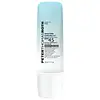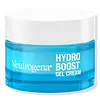What's inside
What's inside
 Key Ingredients
Key Ingredients

 Benefits
Benefits

 Concerns
Concerns

 Ingredients Side-by-side
Ingredients Side-by-side

Butyl Methoxydibenzoylmethane 3%
UV AbsorberHomosalate 5%
Skin ConditioningEthylhexyl Salicylate 5%
UV AbsorberOctocrylene 10%
UV AbsorberWater
Skin ConditioningPolymethylsilsesquioxane
Glycerin
HumectantDipropylene Glycol
HumectantDimethicone
EmollientArgania Spinosa Kernel Oil
EmollientTocopheryl Acetate
AntioxidantYeast Extract
Skin ConditioningCyclopentasiloxane
EmollientCyclohexasiloxane
EmollientPhenoxyethanol
PreservativeLauryl PEG-9 Polydimethylsiloxyethyl Dimethicone
Skin ConditioningIsododecane
EmollientDimethicone/PEG-10/15 Crosspolymer
Saccharide Isomerate
HumectantMethyl Gluceth-20
HumectantSodium Chloride
MaskingSodium Hyaluronate
HumectantBisabolol
MaskingPEG-15/Lauryl Dimethicone Crosspolymer
StabilisingSodium PCA
HumectantPropylene Glycol
HumectantCeteareth-25
CleansingSodium Benzoate
MaskingPotassium Sorbate
PreservativeSodium Citrate
BufferingCitric Acid
BufferingSambucus Nigra Fruit Extract
AstringentCetyl Alcohol
EmollientSaccharomyces/Magnesium Ferment
Hydrolyzed Silk
HumectantBehenic Acid
CleansingCeramide NP
Skin ConditioningCholesterol
EmollientEthylhexylglycerin
Skin ConditioningTocopherol
AntioxidantCeramide Ns
Skin ConditioningSaccharomyces/Iron Ferment
Skin ConditioningSaccharomyces/Copper Ferment
Skin ConditioningSaccharomyces/Silicon Ferment
Skin ConditioningSaccharomyces/Zinc Ferment
Skin ConditioningButylene Glycol
HumectantCeramide AP
Skin ConditioningCeramide EOP
Skin ConditioningCeramide Eos
Skin ConditioningOlea Europaea Leaf Extract
PerfumingCaprooyl Phytosphingosine
Skin ConditioningCaprooyl Sphingosine
Skin ConditioningDisodium EDTA
Ascorbyl Palmitate
AntioxidantMica
Cosmetic ColorantButyl Methoxydibenzoylmethane 3%, Homosalate 5%, Ethylhexyl Salicylate 5%, Octocrylene 10%, Water, Polymethylsilsesquioxane, Glycerin, Dipropylene Glycol, Dimethicone, Argania Spinosa Kernel Oil, Tocopheryl Acetate, Yeast Extract, Cyclopentasiloxane, Cyclohexasiloxane, Phenoxyethanol, Lauryl PEG-9 Polydimethylsiloxyethyl Dimethicone, Isododecane, Dimethicone/PEG-10/15 Crosspolymer, Saccharide Isomerate, Methyl Gluceth-20, Sodium Chloride, Sodium Hyaluronate, Bisabolol, PEG-15/Lauryl Dimethicone Crosspolymer, Sodium PCA, Propylene Glycol, Ceteareth-25, Sodium Benzoate, Potassium Sorbate, Sodium Citrate, Citric Acid, Sambucus Nigra Fruit Extract, Cetyl Alcohol, Saccharomyces/Magnesium Ferment, Hydrolyzed Silk, Behenic Acid, Ceramide NP, Cholesterol, Ethylhexylglycerin, Tocopherol, Ceramide Ns, Saccharomyces/Iron Ferment, Saccharomyces/Copper Ferment, Saccharomyces/Silicon Ferment, Saccharomyces/Zinc Ferment, Butylene Glycol, Ceramide AP, Ceramide EOP, Ceramide Eos, Olea Europaea Leaf Extract, Caprooyl Phytosphingosine, Caprooyl Sphingosine, Disodium EDTA, Ascorbyl Palmitate, Mica
Water
Skin ConditioningGlycerin
HumectantDimethicone
EmollientCetearyl Olivate
Sorbitan Olivate
EmulsifyingSodium Hyaluronate
HumectantSerine
MaskingGlycine
BufferingAlanine
MaskingThreonine
Arginine
MaskingProline
Skin ConditioningLysine Hcl
Skin ConditioningGlutamic Acid
HumectantSodium PCA
HumectantPCA
HumectantSodium Lactate
BufferingUrea
BufferingSodium Chloride
MaskingCitric Acid
BufferingBetaine
HumectantAllantoin
Skin ConditioningFructose
HumectantMaltose
MaskingTrehalose
HumectantGlucose
HumectantPentylene Glycol
Skin ConditioningSynthetic Beeswax
Emulsion StabilisingPolyacrylate Crosspolymer-6
Emulsion StabilisingDimethicone Crosspolymer
Emulsion StabilisingDimethiconol
EmollientEthylhexylglycerin
Skin ConditioningCaprylyl Glycol
EmollientSodium Hydroxide
BufferingWater, Glycerin, Dimethicone, Cetearyl Olivate, Sorbitan Olivate, Sodium Hyaluronate, Serine, Glycine, Alanine, Threonine, Arginine, Proline, Lysine Hcl, Glutamic Acid, Sodium PCA, PCA, Sodium Lactate, Urea, Sodium Chloride, Citric Acid, Betaine, Allantoin, Fructose, Maltose, Trehalose, Glucose, Pentylene Glycol, Synthetic Beeswax, Polyacrylate Crosspolymer-6, Dimethicone Crosspolymer, Dimethiconol, Ethylhexylglycerin, Caprylyl Glycol, Sodium Hydroxide
 Reviews
Reviews

Ingredients Explained
These ingredients are found in both products.
Ingredients higher up in an ingredient list are typically present in a larger amount.
Citric Acid is an alpha hydroxy acid (AHA) naturally found in citrus fruits like oranges, lemons, and limes.
Like other AHAs, citric acid can exfoliate skin by breaking down the bonds that hold dead skin cells together. This helps reveal smoother and brighter skin underneath.
However, this exfoliating effect only happens at high concentrations (20%) which can be hard to find in cosmetic products.
Due to this, citric acid is usually included in small amounts as a pH adjuster. This helps keep products slightly more acidic and compatible with skin's natural pH.
In skincare formulas, citric acid can:
While it can provide some skin benefits, research shows lactic acid and glycolic acid are generally more effective and less irritating exfoliants.
Most citric acid used in skincare today is made by fermenting sugars (usually from molasses). This synthetic version is identical to the natural citrus form but easier to stabilize and use in formulations.
Read more about some other popular AHA's here:
Learn more about Citric AcidDimethicone is a type of synthetic silicone created from natural materials such as quartz.
What it does:
Dimethicone comes in different viscosities:
Depending on the viscosity, dimethicone has different properties.
Ingredients lists don't always show which type is used, so we recommend reaching out to the brand if you have questions about the viscosity.
This ingredient is unlikely to cause irritation because it does not get absorbed into skin. However, people with silicone allergies should be careful about using this ingredient.
Note: Dimethicone may contribute to pilling. This is because it is not oil or water soluble, so pilling may occur when layered with products. When mixed with heavy oils in a formula, the outcome is also quite greasy.
Learn more about DimethiconeEthylhexylglycerin (we can't pronounce this either) is commonly used as a preservative and skin softener. It is derived from glyceryl.
You might see Ethylhexylglycerin often paired with other preservatives such as phenoxyethanol. Ethylhexylglycerin has been found to increase the effectiveness of these other preservatives.
Glycerin is already naturally found in your skin. It helps moisturize and protect your skin.
A study from 2016 found glycerin to be more effective as a humectant than AHAs and hyaluronic acid.
As a humectant, it helps the skin stay hydrated by pulling moisture to your skin. The low molecular weight of glycerin allows it to pull moisture into the deeper layers of your skin.
Hydrated skin improves your skin barrier; Your skin barrier helps protect against irritants and bacteria.
Glycerin has also been found to have antimicrobial and antiviral properties. Due to these properties, glycerin is often used in wound and burn treatments.
In cosmetics, glycerin is usually derived from plants such as soybean or palm. However, it can also be sourced from animals, such as tallow or animal fat.
This ingredient is organic, colorless, odorless, and non-toxic.
Glycerin is the name for this ingredient in American English. British English uses Glycerol/Glycerine.
Learn more about GlycerinChances are, you eat sodium chloride every day. Sodium Chloride is also known as table salt.
This ingredient has many purposes in skincare: thickener, emulsifier, and exfoliator.
You'll most likely find this ingredient in cleansers where it is used to create a gel-like texture. As an emulsifier, it also prevents ingredients from separating.
There is much debate on whether this ingredient is comedogenic. The short answer - comedogenic ratings don't tell the whole story. Learn more about comegodenic ratings here.
The concensus about this ingredient causing acne seems to be divided. Research is needed to understand if this ingredient does cause acne.
Scrubs may use salt as the primary exfoliating ingredient.
Learn more about Sodium ChlorideSodium Hyaluronate is hyaluronic acid's salt form. It is commonly derived from the sodium salt of hyaluronic acid.
Like hyaluronic acid, it is great at holding water and acts as a humectant. This makes it a great skin hydrating ingredient.
Sodium Hyaluronate is naturally occurring in our bodies and is mostly found in eye fluid and joints.
These are some other common types of Hyaluronic Acid:
Learn more about Sodium HyaluronateSodium PCA is the sodium salt of pyroglutamic acid. It is naturally occurring in our skin's natural moisturizing factors where it works to maintain hydration.
The PCA stands for pyrrolidone carboxylic acid, a natural amino acid derivative.
This ingredient has skin conditioning, anti-inflammatory, and humectant properties. Humectants help hydrate your skin by drawing moisture from the air. This helps keep your skin moisturized.
Learn more about Sodium PCAWater. It's the most common cosmetic ingredient of all. You'll usually see it at the top of ingredient lists, meaning that it makes up the largest part of the product.
So why is it so popular? Water most often acts as a solvent - this means that it helps dissolve other ingredients into the formulation.
You'll also recognize water as that liquid we all need to stay alive. If you see this, drink a glass of water. Stay hydrated!
Learn more about Water